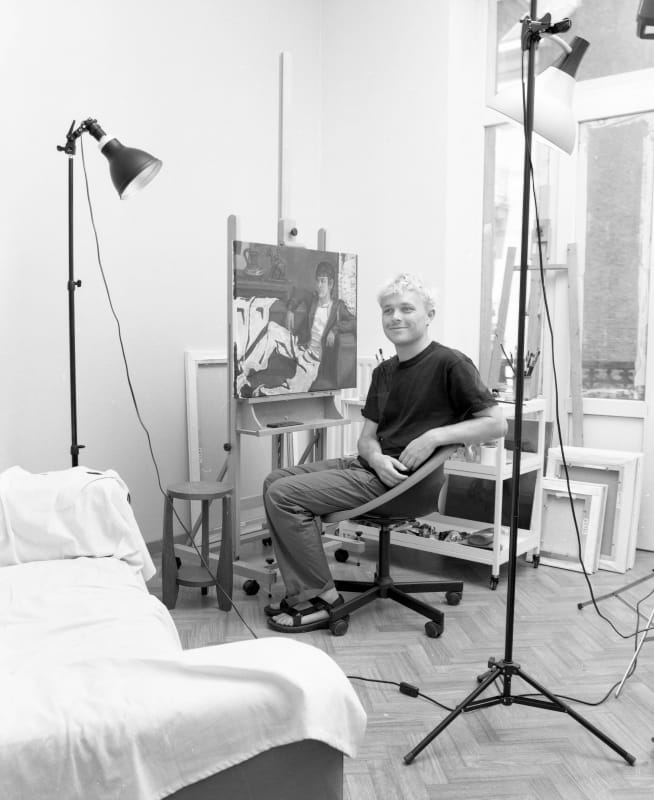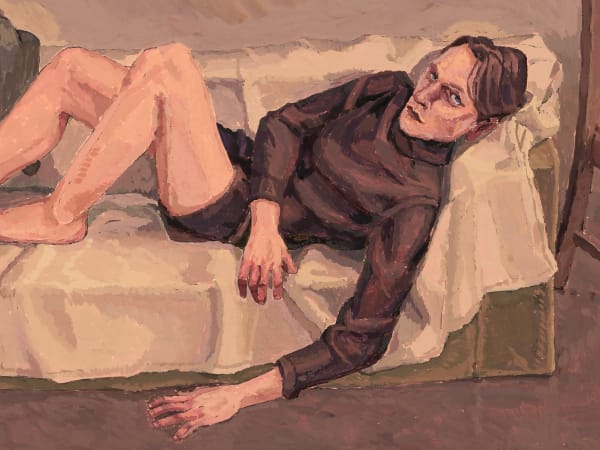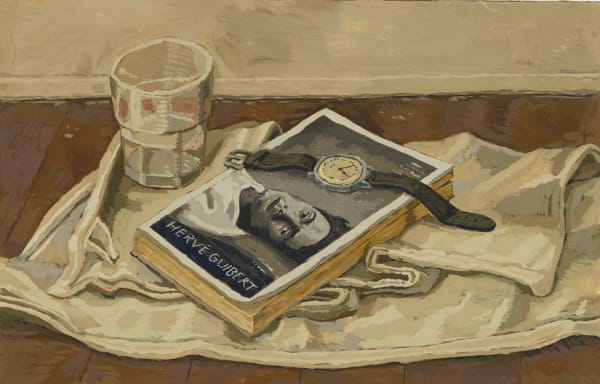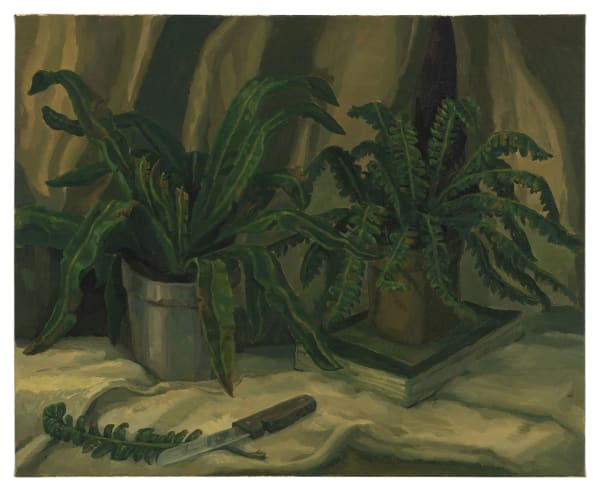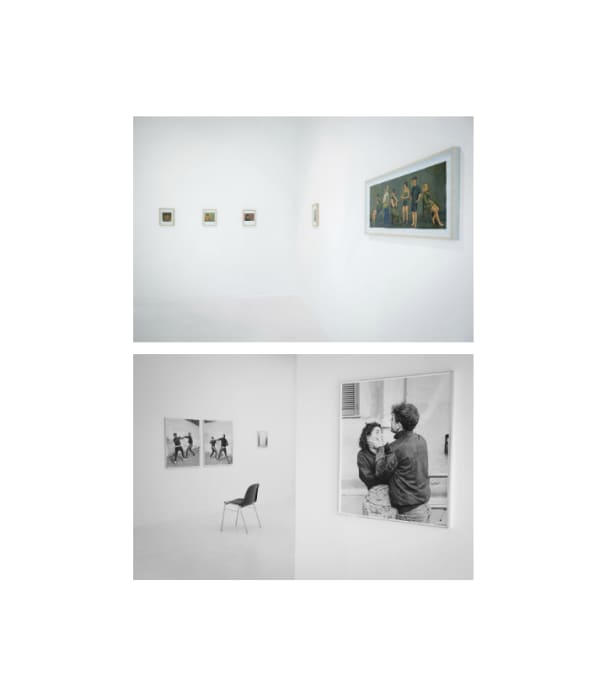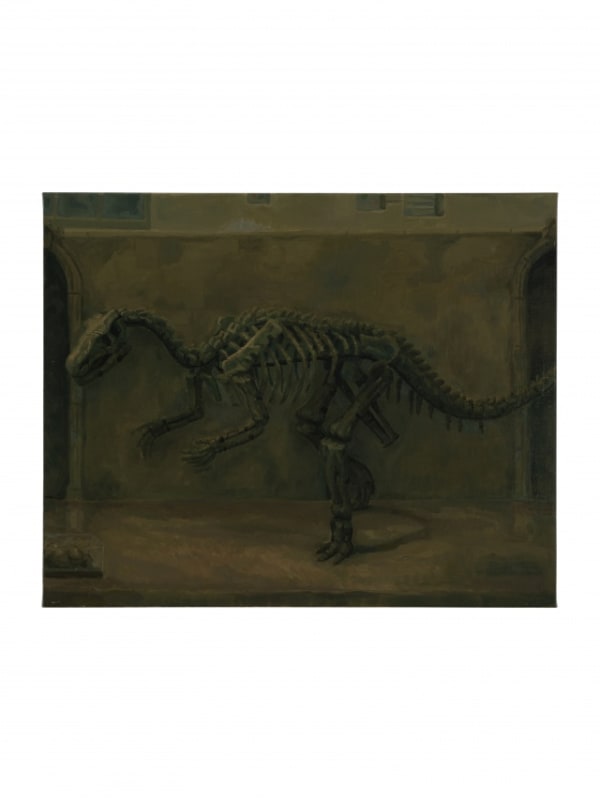Felix De Clercq b. 1997
° Antwerp, BE
Lives and works in Brussel, Belgium.
Graduated from the Royal Academy of Fine Arts, Antwerp in 2020.
De Clercq participated in the WIELS Residency program of 2022-2023.
Felix’s practice is rooted in painting. He uses photographic material he creates himself, drawn from his immediate surroundings, travels, social contexts, as well as literary and historical sources. These images are reinterpreted and abstracted through drawing into compositions that serve as a starting point for a painterly investigation. His motifs—such as portraits, street scenes, and interiors—are used to explore formal and historical questions within painting.
-

Felix De Clercq
30 Aug - 5 Oct 2025 New SouthI saw the fire. I had to think of you. I told myself: there is going to be a fire and we’ll dance around it. It’s going to be magnificent....Read more -

Felix De Clercq
Apple 14 Oct - 19 Nov 2023 New SouthRead more -

Felix De Clercq
Blackbird on a shoulder 27 Nov 2021 - 9 Jan 2022 New SouthWe had been outside that time, our heads sunk deep into our collars. We had not spoken, or in any case not in the way we used to do: ingesting...Read more -

Felix De Clercq
Jongensgeheimen 3 - 27 Sep 2020 South (former location)Tuesday - Sunday 13 - 18h New second location Vlaamse Kaai 74-75 2000, Antwerp In ons huidige internettijdperk lijkt het geen vanzelfsprekende keuze om vandaag de dag voor schilderkunst te...Read more -

L'Heure Bleue - Part II
Groupshow 1 - 23 Aug 2020 New SouthL’Heure Bleue Gallery Sofie Van de Velde and PLUS - ONE Gallery present ‘L’Heure Bleue’. L’heure bleue is the moment when the sun has set - artists/but the night has...Read more -

L'heure bleue Part I
Groupshow 9 Jun - 31 Jul 2020 New SouthL’Heure Bleue Gallery Sofie Van de Velde and PLUS - ONE Gallery present ‘L’Heure Bleue’. L’heure bleue is the moment when the sun has set, but the night has not...Read more -

Felix De Clercq
@thewunderwall 11 Jan - 1 Mar 2020 New SouthIn our current digital age it doesn’t seem like an obvious choice to choose painting today. But as a young artist, Felix De Clercq takes the freedom to approach every...Read more
-

Imagery as Encounter at Gallery Sofie Van de Velde
September 11, 2025In Gallery Viewer (09 September 2025), writer Indra Devriendt reflects on the current exhibitions at Sofie Van de Velde Gallery, describing them as a dialogue...Read more -

Guided Tour
Felix De Clercq & Max Pinckers September 11, 2025On September 23 at 6 PM, Gallery Sofie van de Velde will host a special guided tour with Felix and Max Pinckers, who will personally...Read more -

Felix De Clercq in conversation with Angelo Tijssens at KMSKA
September 11, 2025Next week at KMSKA, artist Felix De Clercq enters into conversation with screenwriter Angelo Tijssens. Together, they will explore what connects their practices: the everyday...Read more -

Felix De Clercq & Max Pinckers
Collaboration July 18, 2025On the occasion of their coinciding exhibitions at Gallery Sofie Van de Velde, Max Pinckers and Felix De Clercq collaborated for a new work. Departing...Read more -

Soon to be published
Felix De Clercq – Works on Paper July 11, 2025Felix De Clercq will publish his second book with Gallery Sofie Van de Velde. It offers a curated overview of his gouache works on paper,...Read more -

Felix De Clercq's second solo exhibition at Greengrassi, London
05/06/2024Felix De Clercq’s second solo exhibition at Greengrassi, London. The exhibition includes 10 paintings made in 2023 and 2024. All in oil paint on canvas,...Read more
|
Selected Solo Exhibitions |
|
| 2025 |
'Friends and Lovers', C L E A R I N G, New York City, USA |
| 2024 |
Greengrassi, London, UK |
| 2023 |
‘Apple’, Gallery Sofie Van de Velde, Antwerp, BE |
| 2022 |
'The Inn's Attic or The apprentice', Greengrassi Gallery, London, UK |
| 2021 |
'Blackbird on a shoulder', Gallery Sofie Van de Velde, Antwerp, BE |
| 2020 |
'Jongensgeheimen', Gallery Sofie Van de Velde, Antwerp, BE |
| Selected Group Exhibitions |
|
| 2025 |
BRAFA Art Fair, Brussels, BE |
| 2024 |
'Don't think twice, it's all right', Gallery Sofie Van de Velde, Antwerp, BE |
| 2023 |
Miart, Gallery Sofie Van de Velde, Milan, IT |
| 2022 |
'Perspectives minimales en Belgique', Namur, BE |
| 2021 |
'Equal Affections', GRIMM Gallery, Amsterdam, NL |
| 2020 |
'L'heure bleue', Gallery Sofie Van De Velde & PLUS-ONE Gallery, Antwerp, BE |
| 2019 |
'To Be Antwerp', Geukens & de Vil, Antwerp, BE |
| 2018 |
'Not In My Good Christian Suburbs', KASK, Ghent, BE |
Bibliography
| 2020 |
Felix De Clercq |
| 2025 |
Works on Paper, A Collection of 85 Gouache Paintings Pubilshed by Gallery Sofie Van de Velde, 2025 |
